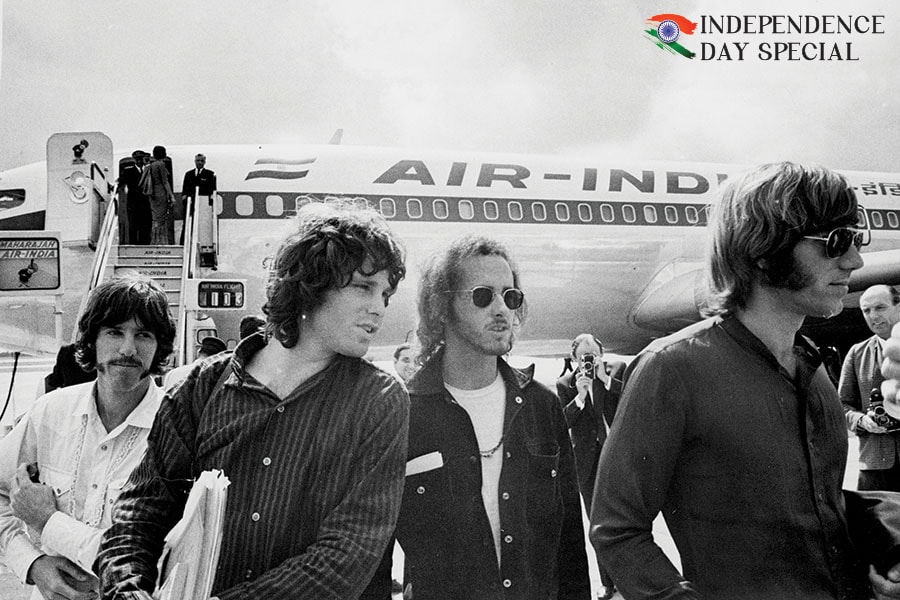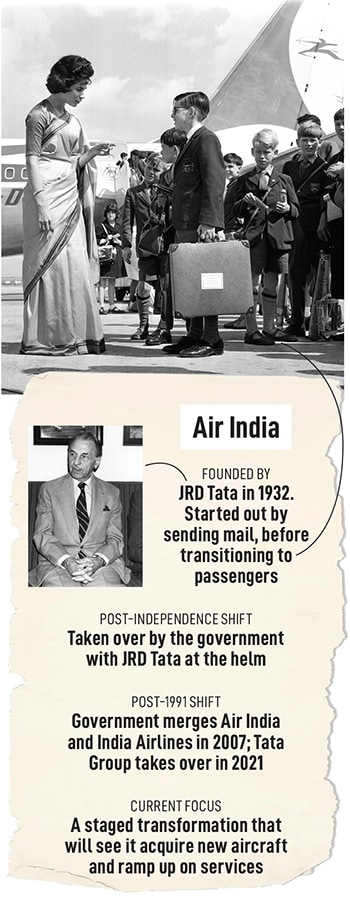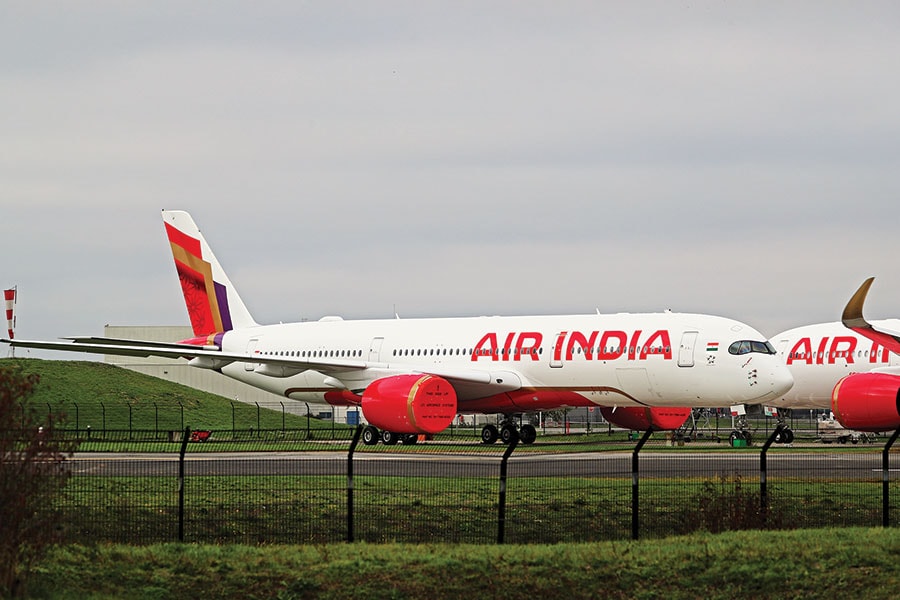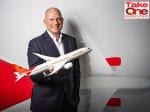Air India: The story of a lost opportunity
More than nine decades after it was founded, Air India has its share of loyalists and detractors, but it doesn't take away from the fact that it will grow into one of the world's largest airlines in the next few years
 American rock group The Doors arrives at London’s Heathrow airport in an Air India flight in September 1968. (From left) Drummer John Densmore, lead vocalist Jim Morrison, guitarist Robby Krieger and keyboard player Ray Manzarek
Image: Leonard Trievnor/Mirrorpix via Getty Images
American rock group The Doors arrives at London’s Heathrow airport in an Air India flight in September 1968. (From left) Drummer John Densmore, lead vocalist Jim Morrison, guitarist Robby Krieger and keyboard player Ray Manzarek
Image: Leonard Trievnor/Mirrorpix via Getty Images
It’s without doubt, the root around which India’s aviation sector grew into the world’s fastest-growing aviation market.
But that doesn’t take away from the fact that Air India will grow into one of the world’s largest airlines in the next few years, with a fleet well north of 600 aircraft.
 Already, it has placed an order for as many as 470 aircraft worth a staggering $80 billion as part of its next phase of transformation under a new private owner, after years of being controlled by the government.
Already, it has placed an order for as many as 470 aircraft worth a staggering $80 billion as part of its next phase of transformation under a new private owner, after years of being controlled by the government.On paper, it may not be the nation’s flag carrier anymore but often gets called into service every time a national demand arises, the latest being to bring stranded Indian journalists and cricket players after the country won the T20 cricket World Cup in Barbados. “The Air India of today is not the Air India of yesterday and the Air India of today is certainly not the Air India of tomorrow,” Campbell Wilson, CEO of Air India told Forbes India in an interview last year.
Still, it’s without doubt a story of lost opportunity. In its heyday, under its founder JRD Tata, the airline was something of an inspiration for airlines such as Singapore Airlines and Cathay Pacific, which turned to the airline to understand service standards and operational acumen. By the early 1980s the descent had begun, after Tata was unceremoniously sacked by the government.
JRD Tata, former chairman of the Tata Group, had founded Air India in 1932. The first flight of Tata Air Services, piloted by JRD Tata, a Puss Moth aircraft, took off from Karachi to Mumbai on October 15 that year, with a capability to fly at 100 miles per hour, carrying a consignment of mail as well as two passengers.
In 1938, JRD Tata named the company Tata Airlines, and later Air India. A year after independence, Air India started a service to London before the country’s Soviet Union-modelled Planning Commission recommended that airlines in India be nationalised.
Also read: Counterstrike: How IndiGo is taking the fight to Air India even before the latter's turnaround
In 1953, the Indian Parliament passed the Air Corporations Act, which sought to merge all the existing airlines into two corporations owned and operated by the government.
Tata fought that move tooth and nail, but the government under Prime Minister Jawaharlal Nehru pushed through and nine airlines, Air India, Air Services of India, Airways (India), Bharat Airways, Deccan Airways, Himalayan Aviation, Indian National Airways, Kalinga Airlines, and Air India International were brought under its control, forming two airlines, Air India and Indian Airlines. Air India would fly internationally while Indian Airlines would look at domestic operations.
 Air India received the delivery of Airbus A350-941 aircraft, parked here at Toulouse-Blagnac Airport in France, in 2023
Image: Evening Standard / Hulton Archive \ Getty Images
Air India received the delivery of Airbus A350-941 aircraft, parked here at Toulouse-Blagnac Airport in France, in 2023
Image: Evening Standard / Hulton Archive \ Getty ImagesJRD Tata was appointed the chairman of Air India, a post that he held for over two decades, until 1978 when he was asked to leave. Since then, over the years, the airline has come to symbolise everything wrong with governmental interference in the running of day-to-day operations of a company.
Much of that is largely due to an ill-timed move by the Indian government in 2007 when it merged Air India—then flying internationally—with domestic carrier Indian Airlines, creating a bigger entity, the National Aviation Company of India Ltd. Both Air India and Indian Airlines were making losses at that time, bleeding ₹541 crore and ₹240 crore, respectively, in 2007.
By 2021, debt at Air India swelled to over ₹61,000 forcing the government to push through a disinvestment programme when it sold the airline to the Tata Group. Today, the airline continues on a phased transformation approach, that will see it significantly reducing its workforce, adding new aircraft, a merger with Vistara, and subsequently operating a full-service and low-cost arm in addition to a focus on reclaiming its reputation as one of the finest in the skies.
Perhaps, it might just get there as it celebrates a century of its existence.
(This story appears in the 23 August, 2024 issue of Forbes India. To visit our Archives, click here.)


















